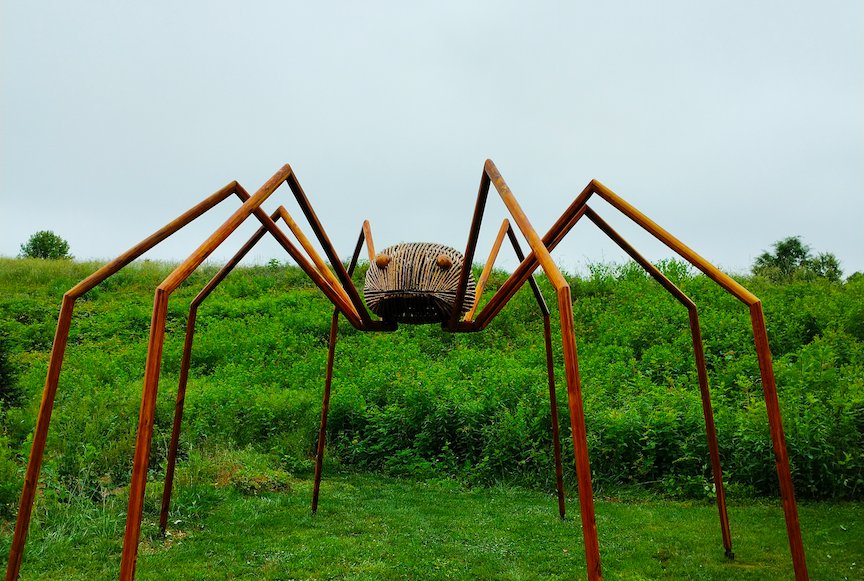City-dwelling raccoons are getting too smart for our own good.

Perhaps you’ve seen those articles, the ones fretting over how machines are getting so much smarter and how one day, not so far in the future, they’ll be more intelligent than us, and then they’ll RULE THE WORLD!!! (Cue maniacal laughter.)
Well, don’t worry. It’s not your laptop that’s plotting your subjugation. Our future overlords are already among us, and they are smallish and furry and kind of cute, and one of them may be languishing somewhere near your home right now with a mild case of indigestion after polishing off the remains of yesterday’s hot wings excavated from the depths of your Supercan.
They are raccoons.
Yes, I hear you scoffing. “Raccoons,” you say with a light laugh. “Pests, maybe, but no worse than that.”
You would be wrong.
The raccoon is a species native to North America whose name Virginia can lay a sort of claim to: “Raccoon” is an Anglicized version—generally credited first to Captain John Smith—of the Powhatan Indian name for the creature, which means roughly “animal that scratches with its hands.”
And it is those hands, indeed, that hold our future in their grasp. A raccoon’s front feet are incredibly dexterous and extremely sensitive, with a dense mesh of nerves feeding sensory information to the brain. While raccoons were long thought to “wash” their food, now, according to the fascinating “Raccoon Nation,” an episode of the PBS “Nature” documentary series, researchers understand that raccoons put their paws in the water because doing so allows those nerves to become even more sensitive. Raccoons, notes the documentary’s narrative “see the world with their feet.”
They do a lot more with those feet. They are excellent climbers (and they are good swimmers as well), and they can get in trashcans and compost bins, of course, but that sort of thing is child’s play for them. The documentary shows them defeating, through determined persistence, a tent zipper, a bungee cord and a door handle.
And once raccoons learn a new skill, they remember it. They might even pass it along; mother raccoons teach their offspring, called “kits,” the ways of their world, whatever their particular world might be.
Once, that world was one only of trees and fields and wild things. In that world, where raccoons still certainly can be found, they den in trees and burrows and eat a diet that includes plants, fruits and nuts, eggs, insects, frogs and crayfish. Sitting high on the food chain, they don’t have many natural predators: Large owls will sometimes snatch the young, and coyotes, bobcats, cougars and foxes apparently will prey on them as well.
But more and more, raccoons, like people, are finding that life in the city—so much more convenient and richer in its resources—suits them very well indeed, and in some cities the density of the raccoon population is now far greater than it is in the more rural surrounding areas.
Unfortunately, burgeoning urban raccoon populations are a problem we’ve brought on ourselves. Raccoons are intelligent, omnivorous and highly adaptable, a combination of qualities that allows them to commandeer our infrastructures and lifestyles to their advantage. They waddle through cat doors and plunder bird feeders. They insinuate themselves into our attics and garages (with a knack for squeezing through what would seem to be impossibly narrow openings), and they harvest our trashcans. They raid chicken coops and ornamental ponds and carefully tended gardens; if a slew of online gardening-help forums are any indication, woe unto your sweet corn in particular.
Some of those forums also suggest that coyote urine (which—why is this no surprise?—you can buy online in both real and synthetic versions, if you don’t happen to have a coyote handy) is an effective deterrent. Otherwise, there’s not much to discourage a raccoon.
In the city, the only “predators” that pose any meaningful threat are cars, which in fact are the leading cause of death for urban raccoons. One of the many interesting things “Raccoon Nation” documents, however, is that when scientists fitted raccoons in Toronto with GPS tracking collars, it became clear that the animals kept to a well-defined range of only a few square blocks, and that in their rambles through their neighborhoods they had obviously learned to avoid major streets.
Learning seems to be what raccoons do extremely well, and researchers studying urban raccoons suggest that the very efforts we take to foil the masked bandits might actually be making them smarter—possibly a lot smarter, a lot more quickly, than their country cousins.
We, oh future underlings, are training them to defeat us.
This article originally appeared in our June 2013 issue.









